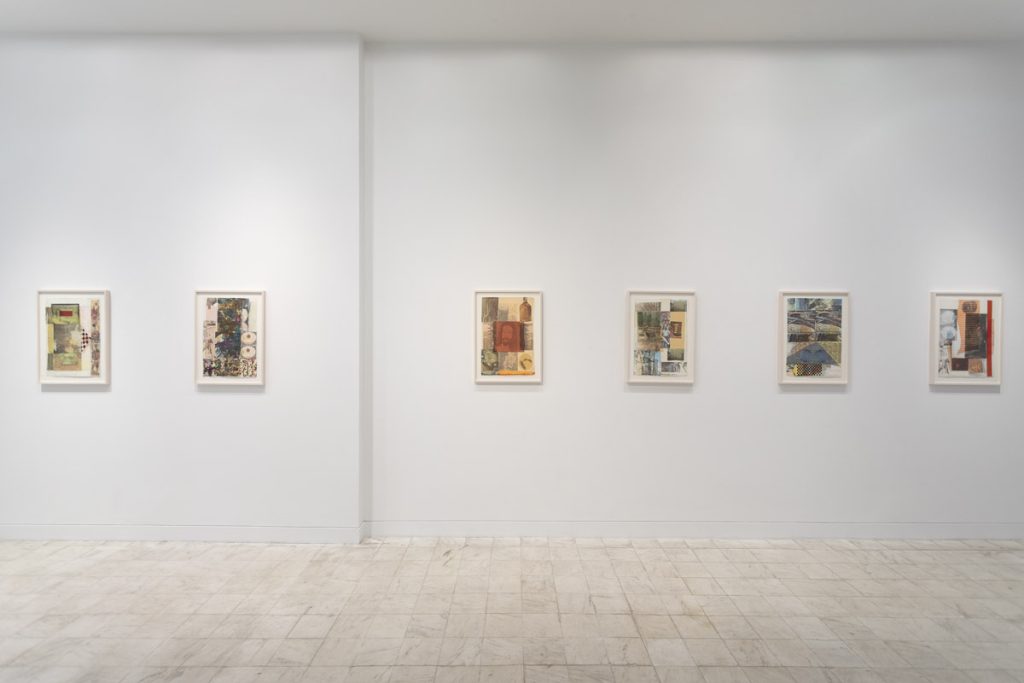The late artist Robert Rauschenberg inspires me, both in general and in my own artmaking.
Though I am still learning different parts of his wide-ranging oeuvre, my impression is that Rauschenberg would draw from just about whatever captured his interest when making art. In conversation, I regularly reference Rauschenberg’s “Canyon” (1959), a wall-hanging assemblage in the collection of the Museum of Modern Art that includes a taxidermied eagle found in the garbage. It is a marvel.
“Robert Rauschenberg: Arcanums” at Gladstone
And though it recently closed, I was fortunate enough this fall to see a solo exhibition of Rauschenberg’s work — for what I’m fairly certain was the first time — at Gladstone Gallery in New York City. Called “Arcanums,” with most of the exhibition part of a series known as such, the spotlighted artworks featured what I’ve come to appreciate as a central facet of Rauschenberg’s practice: the artful, imprecise blending of images.
Though the precise logistics slightly varied across “Arcanums,” the exhibition involved originally printed images transferred over to Rauschenberg’s surfaces with solvent, plus collage. The artworks repeatedly included fabric pieces tacked into place alongside the imagery.
Though beginning to slip beyond precise legibility after the solvent-induced transfers to paper and Rauschenberg’s other additions, the artist largely left the source imagery recognizable, incorporating its aesthetics and ramifications into the subsequent artworks.
And the visual rhythms of the finished creations are surprisingly stable, even in the face of that forwardly marching dissolution of the visual linguistics in which the source images were originally embedded. The free association of Rauschenberg’s follow-up visual compendiums inwardly links sporting events, architecture, and home goods, among other inclusions. In “Arcanums,” it’s all underpinned by the same source — some quietly burning, self-determined fire that drives human expression across these pursuits of everyday life both in and out of the arts.
Each piece of imagery seems to streak across the underlying surface, given a moment to move with abandon before the given artwork proceeds into whatever precisely comes next, repeating much of the process again. These encapsulated moments and ambitions shine.
And I’d say that’s somewhat particular to this series. Though Rauschenberg’s artworks similarly blended images quite a lot throughout his career, these simmered with cultivated passion. And the added fabric amplified this feeling, providing a streak of tangibility above the surface of the image — clearly tactile, though not exactly something like a towering statue. Instead, it was more personal.
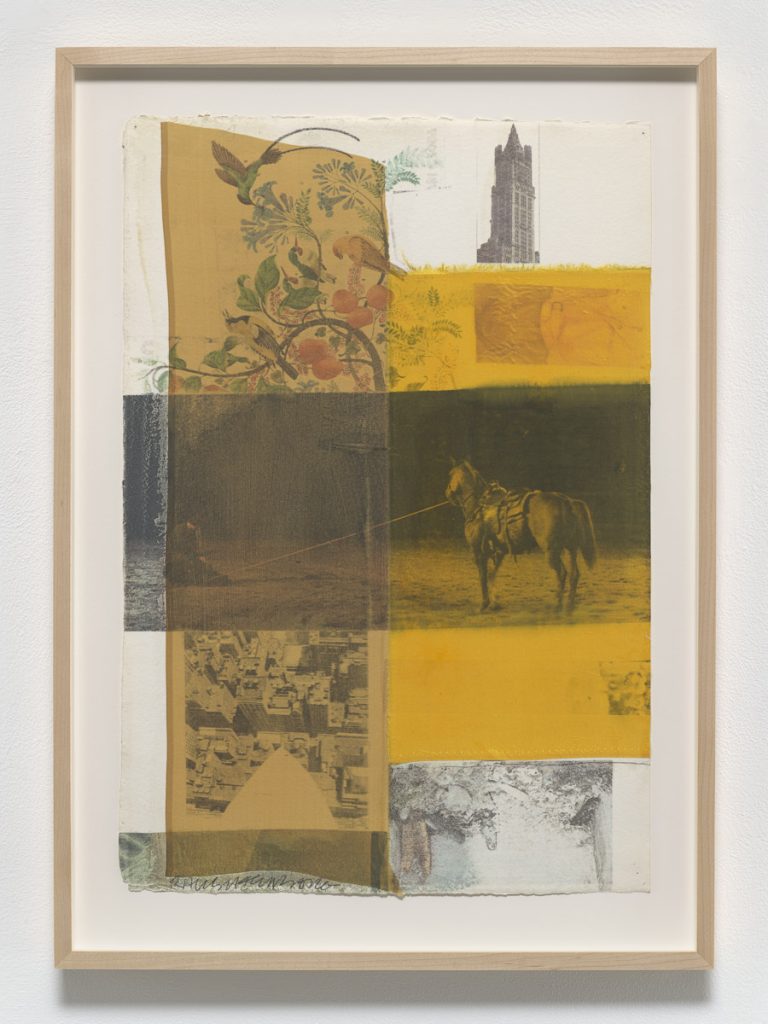
Sites of Perceptual Devotion
There was some religious imagery (think Jesus) in the mix, but I felt as though this series of artworks was nearly entirely religious in fervor, each a site of expressed, enrapturing devotion. The spatial arrangements reminded me of historical religious objects and contemporary household altars. The images across “Arcanums” were assembled with enough embodied, aesthetic force to truly flicker like a candle against encroaching shadows, positioned to allow a site of emotional interchange, like is accomplished with God — however that’s conceived — in actual religious contexts.
Framed, the “Arcanums” artworks were each about 20 inches tall — in their totality putting forward connotations the same as how each image-to-image interaction within the pieces was coming across.
Some of Rauschenberg’s artworks are, plainly, very large, and what this much smaller scale ended up communicating was a balance between communicative intimacy and grander ambition. The depicted moments of familiar, recognizable action in the source material became instead a processional cloud of communication: an offering of meaning from one to the other in which that naturally intermingling, interpersonal process begins to grow on its own.
In each exhibited artwork, the imagery — held in fleeting isolation — brought to mind a want for connection hiding within everyday situations. Though the imagery was altered and given new context, each part flowed into the next with a careful, focused dose of the freedom that always seems to permeate whatever I see from Rauschenberg. The art could be considered hopeful, as it balances between careful fragility and quiet grandiosity — like a growing vine that implausibly manages to make an unwelcoming environment work for growth. Here, it’s the imagery of the everyday that is growing.
As embodied in the “Arcanums” series, truly seeing means looking beyond the physical specifics in front of you. It all remains amply perceptible as you make your way through these landscapes of sense and experience, but precise specifics are replaced by waving the flag of these palettes of presence — something broad and uniting that you feel like was lying behind all of this the whole time and remains linked to the journey’s origin points.
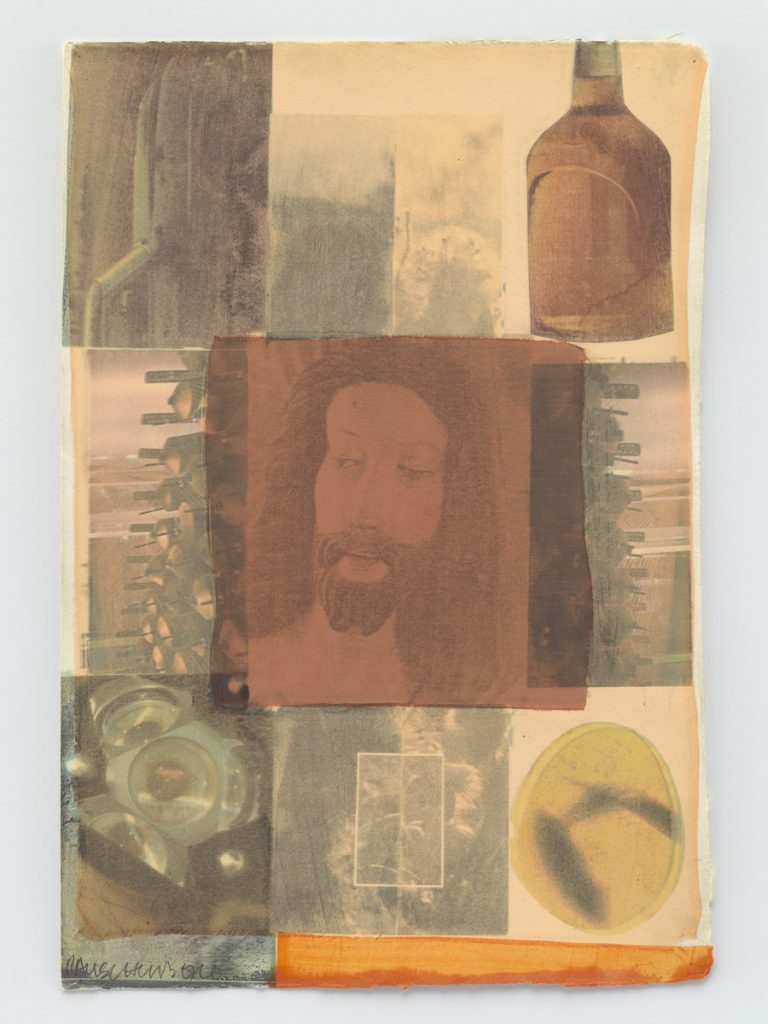
Connection
The specifics of where Rauschenberg started were merged into quick jolts of visual fire in this memorable exhibition, where the direction was consistent. Rauschenberg’s processes removed the rigidity and instead offered moments of interpersonal connection. In various guises, that added fabric contributed a feeling of gentle touch.
It’s a key thing that feels amplified in the “Arcanums” series: a sense of purposed, welcoming cohesion. Though the gradual disintegration of otherwise at least somewhat recognizable imagery is jarring and stays that way in the art, the visual movements in this series are reinforcing for the path underfoot. The artworks greet the viewer with the cohesion of a figure, even though the overarching visuals instead are subsuming the only actual, direct representations of figures, coming from the source material.
But ultimately, that substrate of interconnected, forward power is grand.
You also find a sense of loss in these images as they seem to dissolve right before you, and some areas of the imagery are profoundly obscured by Rauschenberg’s layering.
But the “Arcanums” series is a vision of perceptual buffets coming together despite that, freely incorporating the coexistence with loss into the final artworks. It’s a visual and experiential intermingling that rises above and sticks around, an artistic tale of pulses of progress in the relationships between people, elucidating how memories might reshape each other. Essentially, it’s as though the depicted experiences, once had, quickly begin taking on lives of their own as recollections that will never stay the same. But you can still meet your personal and collective past.
“Robert Rauschenberg: Arcanums” is closed, but you can find more information at this link.
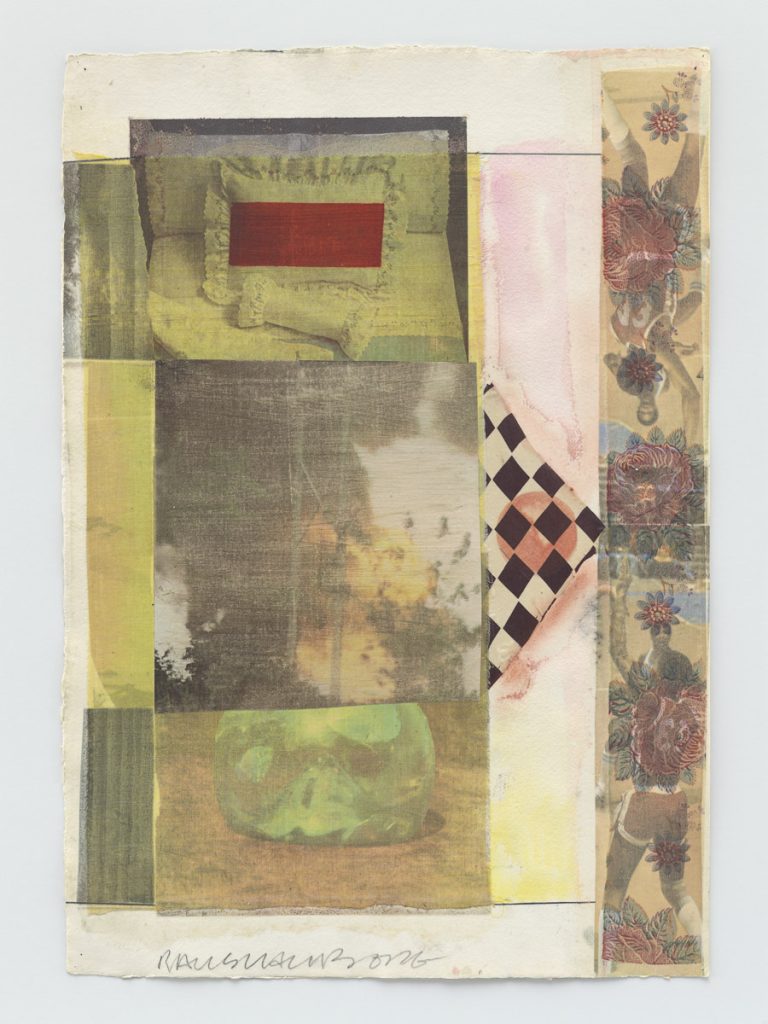
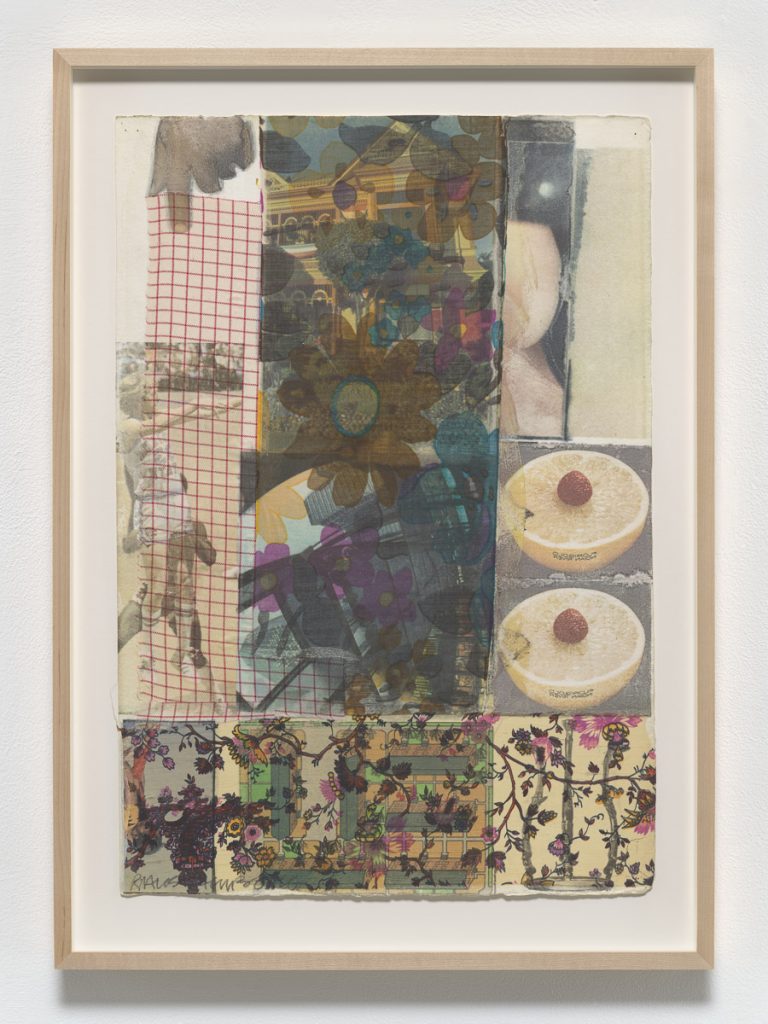
Featured image: Installation view, Robert Rauschenberg: Arcanums, Gladstone Gallery, New York, 2024. © Robert Rauschenberg Foundation / Artists Rights Society (ARS), New York. Courtesy of the Foundation and Gladstone Gallery. Photography by David Regen.
You may also like
-
Diana Kurz at Lincoln Glenn in New York: A Review of a Shining Art Exhibition
-
Dustin Hodges at 15 Orient in New York City: An Ensnaring Exhibition at an Exciting Gallery
-
Maren Hassinger at Susan Inglett Gallery in New York: Reviewing an Uplifting Art Exhibition
-
Enzo Shalom at Bortolami in New York City: Reviewing an Entrancing Exhibition of Paintings
-
“Ben Werther: Townworld” at Amanita in New York City: Reviewing a Richly Memorable Art Exhibition
